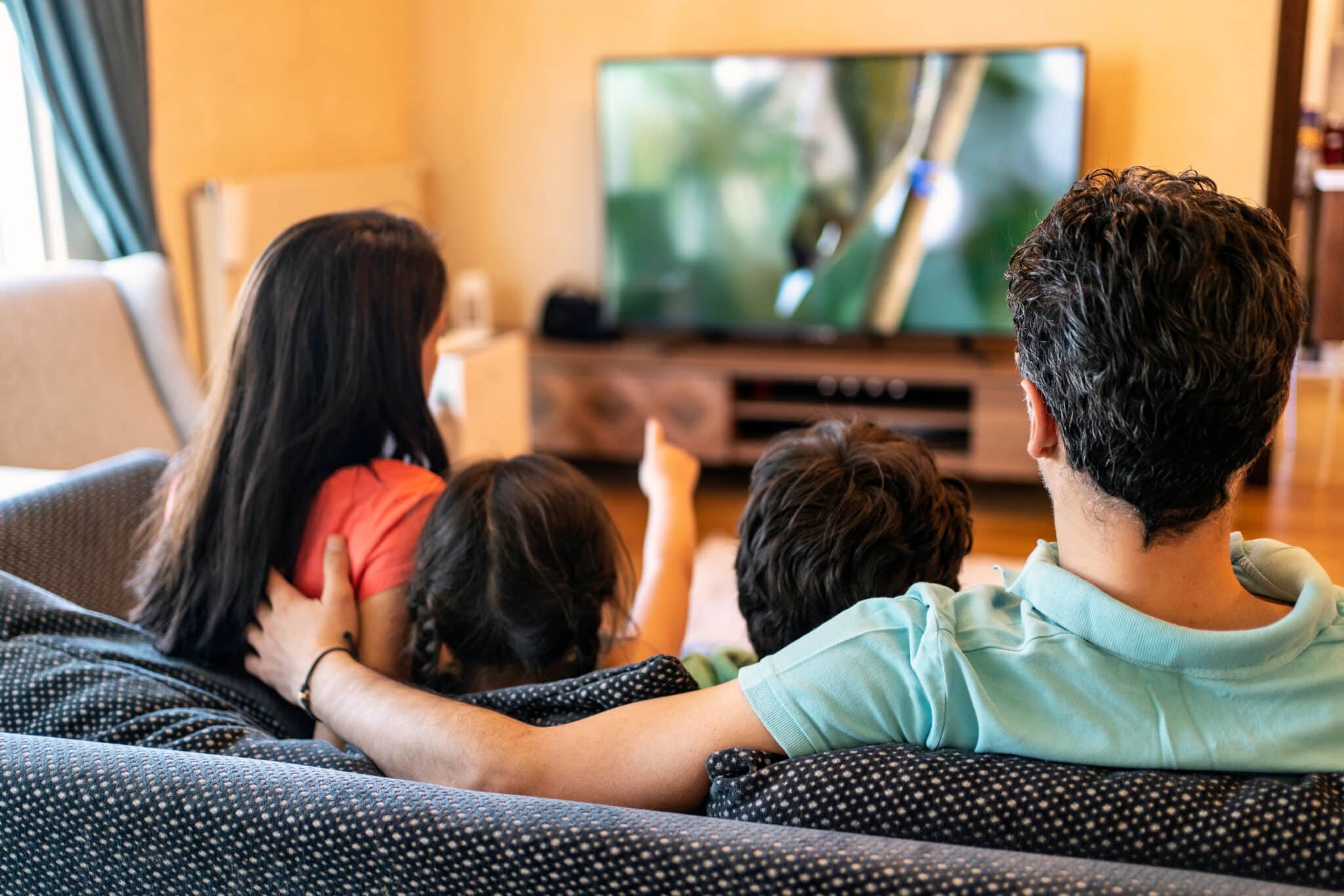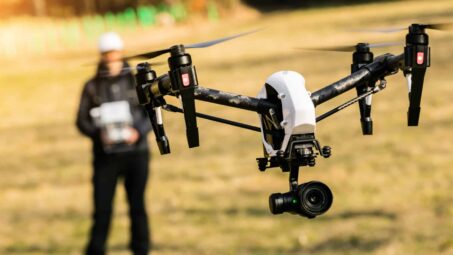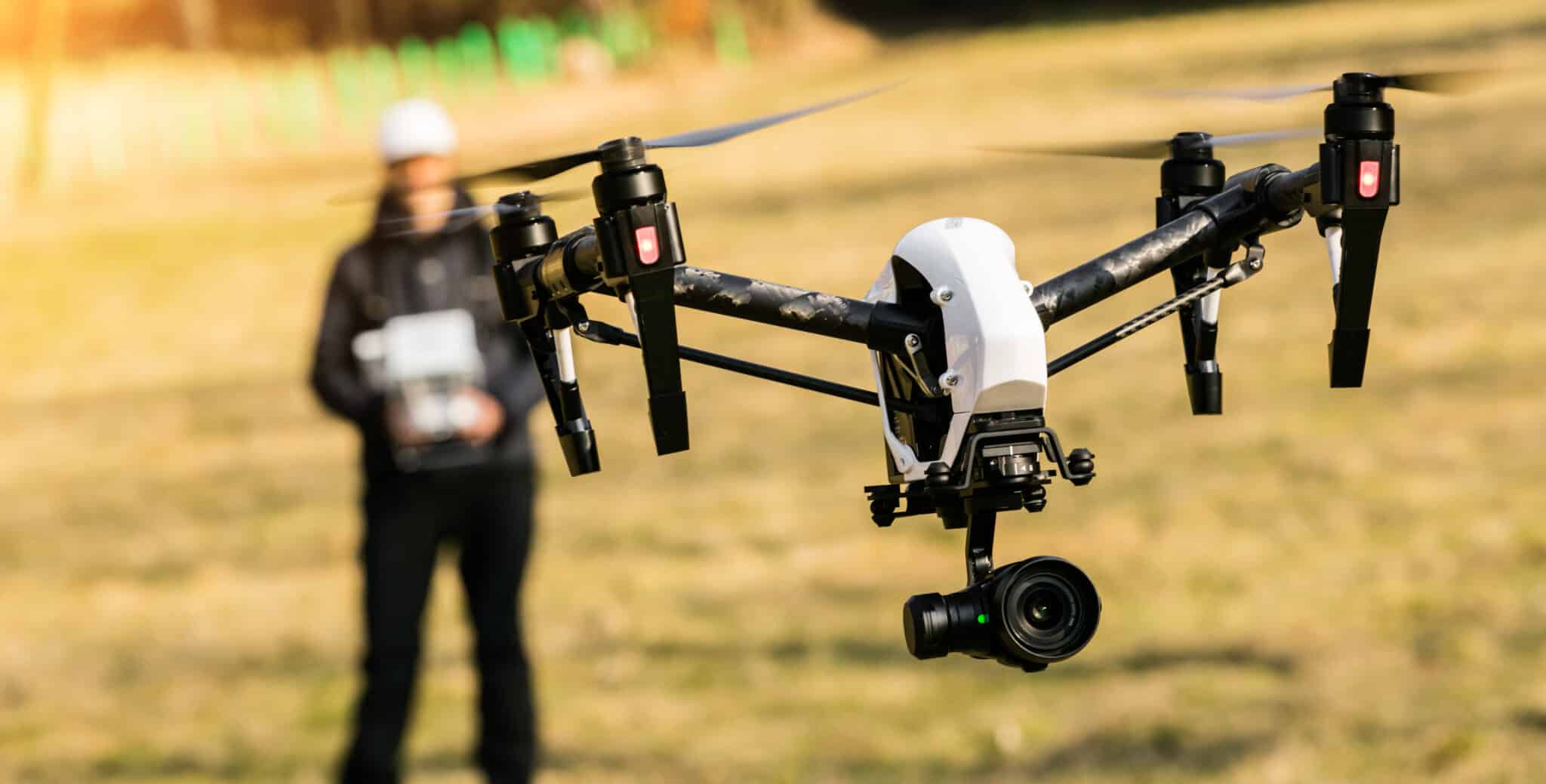If you’re shopping for a new TV, you may be wondering, “How big should my TV be?” With all the models and technologies available, choosing the right size television can seem overwhelming.
But whether you’re looking for a smart TV for your home theater or a smaller model for your office, we’ll help you find the right size for your needs.
What to Know When Choosing a TV
From screen size to picture resolution, there are many considerations to keep in mind when shopping for a television set. But before you buy, it’s important to understand certain technological terms and other factors. Here’s a good list of topics to get you started:
A Note on Sizing
Keep in mind that TV screens are measured diagonally in inches. It’s worthwhile to check the full specs including height, width, depth, and mounting style before you move forward to make sure the television you choose is truly right for your space.
How To Choose the Best TV Screen Size for Your Space
To ensure comfortable viewing, a TV screen should fit the space where you plan to watch it. Living room TVs typically measure 55 to 65 in., while bedroom and office models tend to run less than 45 in.
Meanwhile, the largest screens can measure as much as 85 in. Larger models work best in larger rooms so that you can sit far enough away to properly view the screen.
It may make sense to ask yourself, “How big should my TV be so guests and family members can all see it from anywhere in this room?”
TV Resolution & Picture Clarity
Resolution determines the clarity of the picture on the TV screen.
Televisions are available in three resolution levels:
- 1080p
- 4K
- 8K
Higher resolution produces a clearer and more detailed image. Therefore, you can watch a high-resolution TV from a shorter distance without the image looking pixelated.
Display Technology for Contrast & Brightness
Another factor in TV picture quality is the type of display technology.
Today, there are three common display technologies:
- Light-Emitting Diode (LED): LEDs light up an LCD panel and produce high-contrast, bright images with narrow viewing angles
- QLED: A quantum dot layer filters the LED light, producing truer, more saturated colors
- OLED: Adjusts individual pixels for superior picture quality and wide viewing angles
Other display tech you may see listed are High Definition Resolution (HDR), HDR10, and the most advanced HDR10+. All three of these refer to the level of brightness, contrast, and color accuracy offered by the television.
Lastly, you may see the term Hybrid Log Gamma (HLG). This is a new type of high-dynamic video content that doesn’t require an HDR-enabled TV.
How Big Should My TV Be if I Don’t Have a Big Budget?
TVs of all sizes are available in a wide range of prices, and the technology can determine the price as much as the size.
Generally speaking, LED TVs tend to have the lowest price tags, while QLED models are often the most expensive. Price doesn’t always determine quality, though. However, it’s important to decide how much you can spend before choosing a TV.
How Big Should My TV Be in Different Rooms?
The ideal size of your TV depends on space size and viewing distance. Ideally, you should view the television from a distance of 1.5 to 2.5 times the size of the TV screen size. For example, a smaller TV with a higher resolution is a good choice for a short viewing distance.
But room size isn’t the only consideration for choosing a TV size. Furniture takes up space in a room, often requiring you to sit closer to the TV than the dimensions of the room itself. So before you buy a TV, figure out if you need to rearrange furniture to accommodate.
How Big Should My TV Be in a Small Space?
In a small space, such as a bedroom or office, you’ll be sitting closer to the TV. To compensate for the smaller TV size, look for a high-resolution model.
How To Choose the Right Small-Size TV
If the viewing distance is 2-4 ft., a small-size TV is your best option. Models that are smaller than 45 in. provide the best viewing experience in a small space. Meanwhile, a 42- to 50-in. screen is suitable for a 5-ft. distance.
Some TV options for small spaces include:
Samsung Neo QLED 4K QN90C: Detail on a Small Scale
Thanks to advanced technology, the Samsung Neo QLED QN90C offers impressive clarity and color for a 43-in. TV. It lets you enjoy a highly detailed, quality picture without glare or distortion.
Here are some top features of the Samsung Neo QLED 4K QN90C:
- Neural Quantum Processor for enhanced 4K resolution
- Anti-Glare with Ultra Viewing Angle technology
- Quantum Matrix with Mini LEDs for ultra-fine light control
- Neo Quantum HDR+ for contrast, brightness, and vivid color
- Dolby Atmos and Object Tracking Sound+
- Optional stand
Amazon Fire Omni Series 4K: Clear & Connected
The 43-in. Amazon Fire Omni Series 4K creates a clear, vibrant picture and connects your favorite devices. This affordable smart TV connects with Alexa to give you streamlined, hands-free control.
You’ll find the following features in the Amazon Fire Omni Series 4K:
- 4K Ultra High Definition
- LED display
- Alexa voice control
- HDR10 and HLG for clarity and vibrance
- 3 HDMI inputs for connecting devices
- Optional legs
How Big Should My TV Be in a Medium Space?
A medium space, such as a living room, typically allows a viewing distance of 6 to 7 ft. To provide a clear picture from that distance, the ideal TV screen for a medium-sized room will, unsurprisingly, be slightly larger than for a small space.
How To Choose the Right Medium-Size TV
A 55- to 65-in. TV is ideal for a medium size space. And with that, 4K is generally a good choice for picture resolution.
These are some TVs that may fit well in medium spaces:
LG OLED Evo G3: Smart Technology in Your Living Room
The LG OLED Evo G3 puts the latest smart technology in your living room. Besides high-quality picture and sound, the 55-in. TV lets you organize your apps, connect your devices, and indulge in your favorite games.
The LG OLED evo G3 offers the following features:
- Quick Cards to categorize apps
- LG Game Dashboard and Game Optimizer
- 300+ free LG channels
- 4 HDMI inputs
- Dolby Vision for brightness and clarity
- Dolby Atmos for wrap-around sound
- FILMMAKER mode that lets you see movies at the aspect ratio and color saturation you’d see in a big-screen theater
Sony Bravia 9 Mini LED QLED 4K: Brilliant & Realistic
The 65-in. Sony Bravia 9 Mini LED QLED 4K offers brilliant colors, realistic sound, and high-quality streaming. Plus, it comes with Google TV.
Other key features of the Bravia 9 include:
- 4K resolution
- XR Processor that intensifies color, contrast, and clarity in real time
- Google TV with Google Assistant
- Brighter colors with QD-OLED and XR Triluminous Pro
- XR Motion Clarity to reduce blur
- SONY PICTURES CORE for high-quality streaming
- Dolby Vision and Dolby Atmos support
Roku Plus Series 4K: Quality Picture at a Lower Price
The 55-in. Roku Plus Series 4K is a less pricey model that provides a quality viewing experience. You’ll enjoy advanced sound and display technology for a more budget-friendly price.
We like the following features of the Roku Plus Series 4K TV:
- 4K resolution
- Automatic brightness and local dimming
- QLED screen with enhanced color palette
- Dolby Vision
- Dolby Atmos
- HDR10+, HLG for contrast and clarity
- Bluetooth private listening
- Voice-enabled remote for hands-free control
How Big Should My TV Be in a Large Space?
The largest TV sets work best when you sit 8 to 12 ft. from the TV, for example, as you would in a spacious living room or home theater. The screen must be big enough to offer a clear, high-quality home theater experience.
How To Choose the Right-Large Size TV
A 75- to 85-in TV is a good choice for a large space. As far as resolution, 8K resolution provides the clearest picture, but 4K is also suitable for large rooms.
Here are some recommendations for large-space TVs:
Sony A95L QD-OLED: Advanced Color & Contrast Technology
The 77-in. Sony A95L QD-QLED creates a vivid home theater experience thanks to its extensive palette of shades and hues. Along with realistic pictures and sound, this TV comes with Google TV and a host of cutting-edge features.
You’ll find the following features in the Sony A95L QD-OLED:
- Cognitive Processor XR for dynamic contrast and natural colors
- Google TV with Google Assistant
- Apple Airplay support
- Multi-view split screen
- SONY PICTURES CORE for high-quality movie viewing
- Dolby Vision and Dolby Atmos
- XR OLED Motion for blur-free action video
Samsung Neo QLED 8K QN900C: Sleek Style With The Latest Technology
The Samsung Neo QLED 8K offers top-notch technology in a sleek package. We like the rich detail and vivid colors of this 85-in. TV. Also, Dolby Atmos adds sound object tracking for an immersive home theater experience.
Here are some main features of the Samsung Neo QLED 8K:
- Edge-to-edge 8K picture with Infinity Screen
- Slim One Connect hides cables
- Quantum Matrix Pro with Mini Lights
- Neural Quantum Processor 8K for enhanced detail
- Neo Quantum HDR 8K Pro for lifelike colors
- Dolby Atmos with object tracking
- Anti-Glare with Ultra Viewing Angle
Sony X80K HDR LED: Rich Yet Budget-Friendly Viewing Experience
Complete with Google TV and picture-enhancing technology, the 85-in. Sony X80K HDR LED is an impressive TV with a price tag that isn’t as high as some other options. Whether you’re watching a movie or enjoying an afternoon of gaming, this TV offers quality and value.
Some of this television’s features include:
- 4K HDR processor for rich color
- Triluminous Pro for enhanced color
- Google TV with Google Assistant
- Apple AirPlay 2 support
- Dolby Vision and Dolby Atmos
- Exclusive PlayStation 5 features
- Motionflow XR technology for blur-free action video
- Video chat with optional BRAVIA CAM
- Hands-free gesture control capabilities.
The Right Size TV for Your Viewing Needs
The proper size TV ensures a clear picture and comfortable viewing. But you also shouldn’t discount viewing distance, picture resolution, and display technology when asking “how big should my TV be?”






